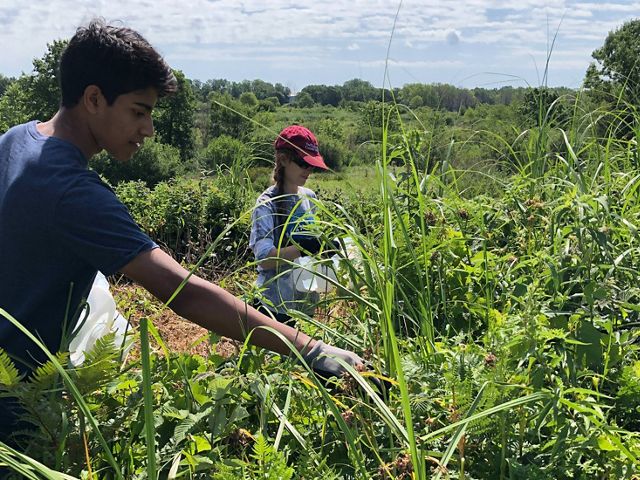Climate Change and the Butterfly Effect
By Elizabeth Gray, Former Global Managing Director, Climate
I’ve been thinking a lot lately about the “butterfly effect.” You may be familiar with the concept, in which a small change in one place, such as a butterfly flapping its wings, creates large, unexpected changes somewhere else, such as a tornado many miles away. As a conservationist focused on climate change, as well as someone concerned with the health and safety of my family, friends, and community, I find the idea of small actions catalyzing unpredictable outcomes both unsettling and encouraging as our planet deals with the tremendous tragedy and slow recovery from COVID-19.
As we rang in the new year, I certainly didn’t anticipate a live animal market would lead to a global pandemic, leading in turn to a rapid drop in emissions as the world went into lockdown. Yet as we start to heal months later, I’ve been surprised and heartened by our global response. Leaders around the world have begun advocating for governments, companies and communities to “build back better.” Citizens are clamoring for us to move away from our business-as-usual paradigm and create sustainable economic models centered on carbon-neutral energy and infrastructure systems. I am hopeful that if we include climate-friendly actions right now as part of our rebuilding efforts, we will design a future that will not only allow us to survive, but to thrive.

We scientists know that we have roughly a decade left to stay below a 2°C temperature increase. This urgency coincides with a once-in-a-century fiscal effort to re-build economies, providing a once-in-a-lifetime opportunity to save our planet. We know progress towards lowering emissions will continue. We have an opportunity to escalate that progress right now.
If we reduce emissions from sectors such as energy, transportation and land use, we can push toward carbon neutrality. Implementing nature-based solutions could capture another 11 gigatons—the equivalent of eliminating emissions from all cars worldwide and all U.S. homes. Better yet, conserving, restoring and better managing our forests, grasslands and wetlands will drive economic innovation while stabilizing the climate—in ways that create new jobs, improve health, promote equity, improve transportation and enhance energy independence. Each of these benefits will create their own unintended consequences, further amplifying societal impact and climate momentum.

And we have the power to act now. A playbook of solutions already exists. We can pressure governments to encourage the market to incentivize reduced emissions, while also expanding the use of renewables and energy efficiency. And we can advocate for better land-use practices like restoring coastal mangrove forests that sequester carbon at up to four times the rate of terrestrial forests, while also providing economic opportunity through the sale of carbon credits, like the work underway in Madagascar.
Quote
Conserving, restoring and better managing natural lands will drive economic innovation while stabilizing the climate.
The year 2020 was supposed to be a “super year” for both climate and biodiversity, but the pandemic has pushed international meetings on environmental action until at least 2021. That’s all the more reason why it’s critical to act now. With every nation determining how to restart its economy, we have the power to advocate for stimulus efforts that put nature and renewable energy at the heart of recovery efforts, benefitting each of us and our planet.
Nature’s future is our future. The butterfly effect ensures we can’t know the ramification of every action we take. But although we can’t predict the future, we can safely assume that anything that benefits the planet will benefit us.
Global Insights
Check out our latest thinking and real-world solutions to some of the most complex challenges facing people and the planet today.


